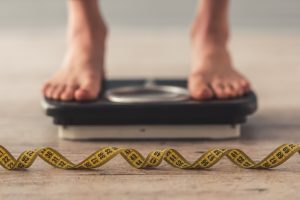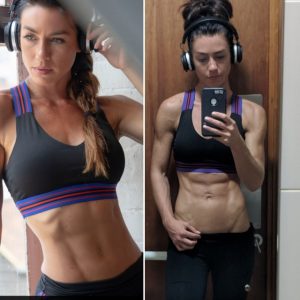Reverse dieting works in the opposite way to most diets. It is a common conception that people associate dieting with cutting calories and restricting foods. What makes reverse dieting such an interesting topic is that people are claiming to be able to increase their calorie intake, without putting on fat. Wow! Well if this is true, it’s an exciting concept, right? If this is accurate, there will be a huge range of benefits for a number of different goals. But is it too good to be true? Does reverse dieting work? Here we discuss the facts and help you decide whether the reverse diet will work for you.
How Does Reverse Dieting Work?
Reverse dieting is the process of training your body to adjust to increased food intake. It involves gradually upping your calories, at a pace that your body can adapt to. The body can then process those calories effectively. This means you’re able to eat more food while avoiding piling on fat. This is beneficial for specific fitness and weight management goals.
Before discussing this, let’s first look at how reverse dieting works.
Reverse Dieting, Adaptive Thermogenesis, and Hunger Hormones
Reverse dieting works on the premise of adaptive thermogenesis (Rosenbaum and Leibel, 2010). This refers to the body’s ability to adapt to a change in calorie intake. As your calorie intake decreases, your metabolism slows down. This is the body’s effort to preserve energy. This can hinder many weight loss and fitness goals.
But adaptive thermogenesis doesn’t just work one way, thankfully! On the flip side, increasing calorie fires up your metabolism again. This is where reverse dieting comes in.

Reverse dieting also serves to balance out your ‘hunger hormones,’ leptin and ghrelin. These hormones are involved in regulating appetite and weight. Restrictive diets can seriously mess with them. While leptin decreases your level of hunger, ghrelin increases it. After a period of restricted calorie intake, leptin levels reduce, and ghrelin increases.
This makes you feel hungrier and less satiated after meals (Hinkle et al., 1996). With leptin and ghrelin out of sync, you might find you overeat. Either that or don’t feel full after eating the same things that used to satisfy you. Reverse dieting rebalances leptin and ghrelin.
Sounds great, right? But does reverse dieting work? Like any diet, it isn’t perfect for everyone.
Who Does Reverse Dieting Work For?
Reverse dieting is a perfect match for individual specific goals. It is ideal for those looking to build muscle while minimising fat gain. It’s unavoidable that to build muscle, you need extra calories. Reverse dieting is a way to up your calories while staying lean. It’s also ideal for those coming off a restrictive diet. Reverse dieting can work as a method to ‘taper off’ a diet while maintaining the same weight. For those who’ve reached a weight loss plateau, it can also aid in kick-starting a slow metabolism. This helps with boosting fat loss down the line.
1. Building Lean Muscle
Happy with your weight, but looking to build a stronger or more shapely physique? Lifting a lot but not seeing any gains in the gym? It might be that you’re not eating enough. You might already know that it’s tough work to build muscle without being in a calorie surplus. Studies find that you can actually lose muscle mass if you’re in a calorie deficit (Villareal et al., 2016), however hard you train.
To see those gains you’re after, you need to take in more calories than you’re burning. But a surplus of calories means getting fat, right? Not necessarily. Reverse dieting can work as a less aggressive form of ‘bulking.’ Reverse dieting provides a way to train your body to slowly adapt to increased energy intake. This allows you to build muscle mass while minimising fat gain. Through reverse dieting, you’re able to build shape and tone your body, and still stay pretty lean.
The Benefit of Gradual Gains
During their ‘bulking’ phase, many bodybuilders don’t mind packing on weight. Their goal is purely to gain as much muscle as they can and will gain size very fast. They also gain fat. But they know that they’ll eventually go through a cutting phase, where they lose it all again. If you’re not in a bodybuilding competition, extremes can be unhealthy. This is especially the case if you want to avoid fat gain.
Packing in extra calories all of a sudden will shock your body. Your metabolism won’t get a chance to adapt, and so it’s easier for these calories to be stored as fat. One study suddenly overfed subjects by 1000 calories for 84 days. Initially, almost all of the extra calories turned into fat until their bodies finally adapted (Deriaz, Tremblay & Bouchard, 1993). Reverse dieting allows your body the time it needs to adjust, bypassing fat gain.
2. Maintaining Weight After Dieting
Perhaps you’ve been on a restrictive diet for a while and have reached your target weight. Or maybe you want to loosen the reins a bit without ruining the progress you’ve made. The hardest part of dieting is maintaining the fat loss after you’ve hit your goal weight. This is where most people ‘drop off’, and yo-yo dieting begins. When you come off a restrictive diet, it is so easy to ‘fall off the wagon’ and undo all the hard work you’ve put in.

It is physiologically more challenging to maintain weight after a diet. This is down to the body’s change in leptin and ghrelin levels. Hunger levels rise, and the feeling of satiety reduces after dieting. Also, adaptive thermogenesis plays a part. Your metabolism will have also slowed down after a restrictive diet. This is the body’s way of trying to replenish it’s energy stores and makes it easier to overeat and put on fat.
Tapering Off the Diet
It is, therefore, difficult to simultaneously maintain weight and return to ‘normal’ eating. Coming straight off a diet can actually mean putting on more fat than before. Nutritionists find that most people who go on a diet put the weight back on within a year (precisionnutrition.com). But continuously restricting your food is unhealthy. Not to mention that it’s no way to live! Reverse dieting is a way to ‘taper off’ a diet by teaching your body to adapt to extra calories. You can then ensure you can eat far less restrictively but maintain your weight.
3. Bypassing a Weight Loss Plateau
It might be that you’ve managed to lose some weight, but you’ve hit a plateau. Cutting more calories out isn’t doing the trick either. It’s beginning to seem impossible to get to your target weight. You might also feel hungrier than before, and less satiated after your meals. This might be because, as we discussed above, your body has adapted to the calorie restriction. Your metabolism and hormones are set to preserve and consume more energy.
Restricting your calories even further won’t do much good here. It’ll only add to the adverse effects on metabolism and hormones. You’ll not lose much more weight, feel hungry, and will likely be pretty miserable! As we’ve discussed, though, throwing out a diet entirely is likely to also throw out your weight loss.
Reverse dieting provides an alternative solution. How does reverse dieting work? By resetting your metabolic capacity and hormone levels. You can then continue to lose weight, without the unhealthy drawbacks.
Rebooting the Metabolism
Reverse dieting is not a new concept in this context. Bodybuilders have done this for a long time, but they call it ‘refeeding.’ Bodybuilders ‘refeed’ after restricting their food intake. This balances out leptin and ghrelin. It also jump-starts their metabolism. This means that they can diet again without such extreme caloric restriction.
You can use reverse dieting to kick-start a slow metabolism, replenish leptin, and bypass your weight loss plateau. When you diet again, you’ll not need to restrict calories as much as before. Nutritionists agree. Monica Auslander Moreno, MS, RD discussed reverse dieting with Shape magazine. She advocated the idea of an increase in calories, stating that “To combat the physiological plateau, [it’s] actually a pretty good idea to up intake.”
Does Reverse Dieting Work? Yes – If You Do it Right
Now we’ve looked at two questions – how does reverse dieting work, and for who? Now you understand the principles and may have decided it’s for you. Before you But hold up – it’s not just a process of eating more food. Does reverse dieting work? The real answer is only if you do it right. Below we cover some important concepts before you start. These will help you avoid common pitfalls and get your reverse diet right from the outset.

1. It’s a Marathon, Not a Sprint
It might be the case that you’ve crash dieted and seen quick results. However, you might now feel the effects of sluggish metabolism and messed up hunger hormones. This leaves you in a rut, not losing any more weight and feeling hungrier than ever. It might also be the case that you’ve gone on a ‘bulk’ and seen your size increase dramatically. But this may have left you with a lot more body fat covering that muscle. This is likely because the process all happened a bit too fast for your body to adjust to.
Reverse dieting is a very gradual process. It involves small and controlled adjustments to calorie intake. This is as little as 100 extra calories every couple of weeks, depending on your goal. Doing this ensures you give your body time enough to learn how to deal with the extra energy it is receiving. It is only by making incremental changes, not extreme ones, that your body has a chance to adapt.
Does reverse dieting work like other diets? No. It doesn’t involve drastic changes so you won’t see overnight results. But it provides you with a way of eating that is sustainable, realistic, and healthy. Dietician Paul Salter MS, RD states: “rather than diving in headfirst… focusing on building a healthy relationship with food is key for long-term health and success” (Bodybuilding.com, 2018).
2. A Calorie is Not Just a Calorie
Does a reverse diet work no matter what you eat? The simple answer is no. Adding a cheeseburger into your daily meal plan one week and then upping to a side of fries is not going to get you results.
Processed foods that are high in calories might seem a quick and easy way of upping your intake. But the body deals very differently with these types of foods, as they are not natural. Remember, reverse dieting operates around avoiding shocking the body. It’s about gradually teaching it to adapt to extra calories. If the body doesn’t know how to deal with what you’re putting into it, it cannot adjust.
Processed Foods and the Reverse Diet
Let’s remind ourselves – how does reverse dieting work? Through kickstarting the metabolism, and rebalancing hormones associated with hunger and satiation. Eating junk food can have the opposite effect. It sends hormones askew and slows your metabolism. This is a sure-fire way to cancel out the benefits of a reverse diet.
First, let’s look at the effect processed foods have on the hunger hormone leptin. Heavily processed foods cause inflammation of the area of the brain associated with leptin production. This results in leptin resistance (Thaler et al., 2012). In basic terms, the body becomes confused by junk food, and cannot ‘see’ that we’re full once we have consumed it. As a result, it produces too much leptin. Hello, hormone imbalance, and abnormal hunger levels!

Processed foods do not have the same effect on metabolism as natural foods either. Wholefoods have a much higher thermogenic effect. This means they fire up your metabolism so your body can process them. Research shows that processed foods don’t have the same metabolic impact (Barr & Wright, 2010). You read more in our post about specific thermogenic foods to boost metabolism.
Eating junk means your metabolism won’t get revved up from your reverse diet. Does reverse dieting work with all-natural foods? Yes! And none are off-limits. Opt for complex carbohydrates and plenty of protein for a high thermogenic effect. Stick to foods containing as little additives as possible to keep your leptin in check.
3. The Importance of Proper Tracking
Does reverse dieting work? If you’re prepared beforehand and track the right information. We’ve established that a reverse diet is a gradual process. We’ve also looked at why we should be mindful of where we’re getting our calories from. This leads us to highlight the importance of a measured and controlled approach.
The reverse diet isn’t complicated. But it requires calculating a few basic figures first. You’ll then need to keep track of your calories week to week to ensure you’re hitting your targets. The reverse diet is not one-size-fits-all. Calorie and macronutrient goals differ from person to person.
You’ll first need to know your current daily caloric intake. You’ll also want to know your calorie goal, so you know when to stop reverse dieting. It’s also a smart idea to keep track of your macros. This is so that you know you’re making the right food choices for your specific goals.
Another essential thing to track is your progress. Ideally, this should be visual. Sadly, society has a negative view on eating more. This can mean reverse dieting might be psychologically uncomfortable at first. Because you’re in a calorie surplus, you will initially gain a small amount of weight. So, depending on your goal, numbers on the scales might unsettle you. But as long as you’re eating the right foods, your body will look healthier and stronger!
My Personal Reverse Diet Progress
To give you an idea, here’s my own personal progress so far on the reverse diet. When I began, I wanted a stronger, more athletic physique. Low carb dieting had stripped me of my curves. Plus, I felt pretty weak in the gym. I knew I had to change something, but I didn’t want to put on fat. Cue the reverse diet!
These photos are only a couple of months apart. I weigh 8.5 stone on the left and just under 9 stone on the right. I trained using the app https://shredify.com/ and followed the reverse dieting principles simultaneously. For me, it worked. If I just looked at my weight on the scale, I would have freaked. I’d have probably abandoned the reverse diet altogether. But I’m pleasantly surprised what an extra few pounds have done for my figure!

It’s easy to lose focus on the long-term goal, and feel unnerved by eating extra food. Taking progress photos will highlight the positive changes that are happening to your body. This keeps you reassured that eating more is having the effect you want!
Ready to Start Reverse Dieting?
So, does reverse dieting work for your goals? If so, your next question is likely to be, “how do I get started?” In my next post, you’ll find step by step reverse diet guidance. Check back soon to find out more!
